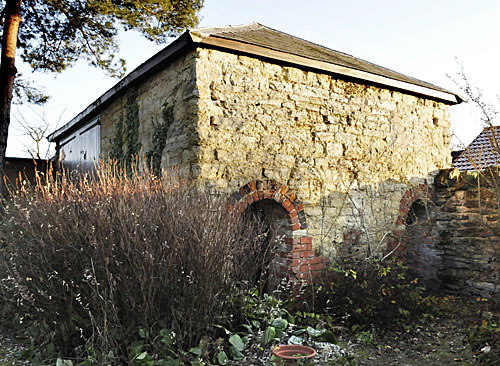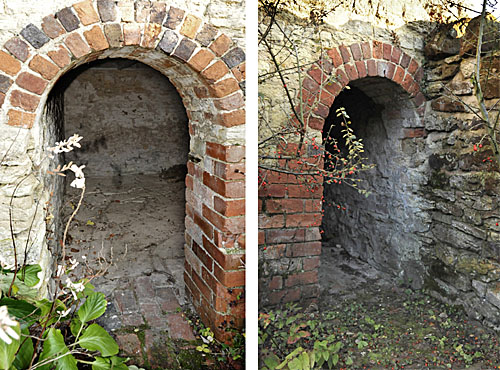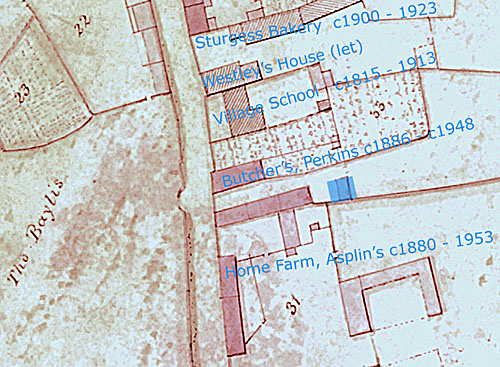|
Blisworth Pig Clubs
Our language includes the compound verb to club together to refer to the combined effort of a group of people with a common aim that is necessary because the commitment or effort of only one independent individual would be insufficient. "Pig Clubs" came into being in WWII years and continued for a few years as long as there was a severe rationing of meat. The government made it known that the setting up of pig clubs was to be encouraged by local councils. Farmers with an unused sty or a small and easily enclosed patch of land were encouraged to join a club and make that their contribution. At the same time, in the UK, there was another scheme which caught on in a big way - it was called "Dig for Victory" and led to parks and private gardens being set out for vegetable growing rather than flowers or lawn. Household economies benefited from the vegetables produced and our island was less subject to the stress from isolation should the German shipping blockade become more severe. We do not have any direct evidence of a war years pig club in Blisworth. Hearsay claims that the two pig stys behind the "Butcher's shop" in the Stoke Road were used by a club. Below is a picture of the twin sty and a part of an early map (1838) to which has been added the outline of the little building thought to have been established around 1885.
The model for a pig club is to purchase a piglet (or even breed piglets), fatten it using as much kitchen waste such as potato peelings as possible then slaughter the grown pig and have the meat distributed among club members. An important element of the pig-food preparation was to cook the waste vegetables in some 'copper' to kill bacteria and prevent the pig from contracting various intestinal diseases. The boiled material, generally called slops was balanced in terms of nutrients by the addition of coarse flour (meal) and a small amount of salt. Despite food rationing, clubs were allowed to buy, legally, a certain amount of good pigfood to compensate for the meagre diet and some of the largest pig clubs in the country were encouraged to use professional slaughterers and sell some carcasses back to the government - this was rare however. Naturally there were clubs with particular resources, and some idiosyncrasies, where special ingredients were added to promote fast growth. The beer dredges from barrels from the local pub was a common supplement. By the early 1950s the government was forced to apply a brake. There were too many cases of pig diseases, some thought transferable to humans, that arose from the use of slops and eventually a law was passed that ruled against any use of domestic kitchen waste being fed to animals for public meat production. All pig clubs quickly died out. It came to light in investigating the accounts of the Blisworth's Allotments Association that there was once a pig club and in 1961 there were three residual members who wished to transfer £13 of unused funds into the allotments association. Names involved included Messrs. Stewart, Douglas and Sturgess. Jack Stewart kept pigs "all his life" - at first with his father Joseph then at the sties behind the Royal Oak public house in the 1920s and finally on a patch of land next tothe Clifton Cottages. For some time he was a slaughter-man at the Bacon Factory. From the 1920s Blisworth was already well versed in all aspects of the pork business. Quite a few villagers worked at the premises of the British Bacon Company - a collection of buildings known as the "Bacon Factory". The objective of the business was to provide wholesale pork and retail pies and other products. Another factor in favour of meat production know-how in Blisworth was Knut Erichsen's arrival, with family from Denmark, in 1947. They lived at Blisworth House and quite quickly Erichsen bought up the Asplin's farm land with the stated aim of breeding a fine white long-backed pig. However he actually confined his breeding to 8 acres of land near the canal and managed to sell a sizeable package of land for housing development that saw Blisworth in the 1960s and 70s expand at an unprecedented rate. But to get back to pig clubs, they were probably more of a natural component of Blisworth life in the depression years until they were formally encouraged during WWII. An anecdote from the depression is that William Whitlock's pig was the thinnest in the village - he fed it sparrows that he managed to catch. Statements in Parliament around 1946 refer to the great success of the scheme as 4800 known clubs had been formed across the country.
|



 The sty building is drawn in
blue. It has a section at higher level that was probably a store
and, during the war (1943), seemed to be used as a "digs" for a guy
who called himself "Posty". Enquiries led to only one
suggestion: that Posty was
The sty building is drawn in
blue. It has a section at higher level that was probably a store
and, during the war (1943), seemed to be used as a "digs" for a guy
who called himself "Posty". Enquiries led to only one
suggestion: that Posty was